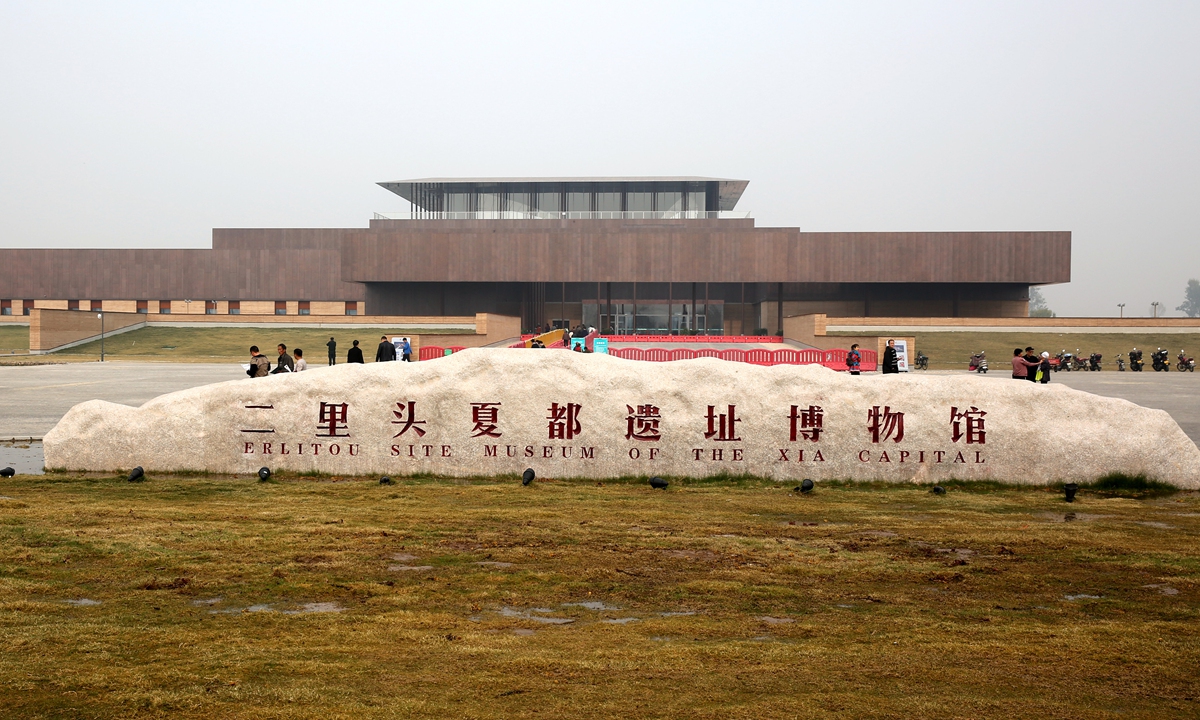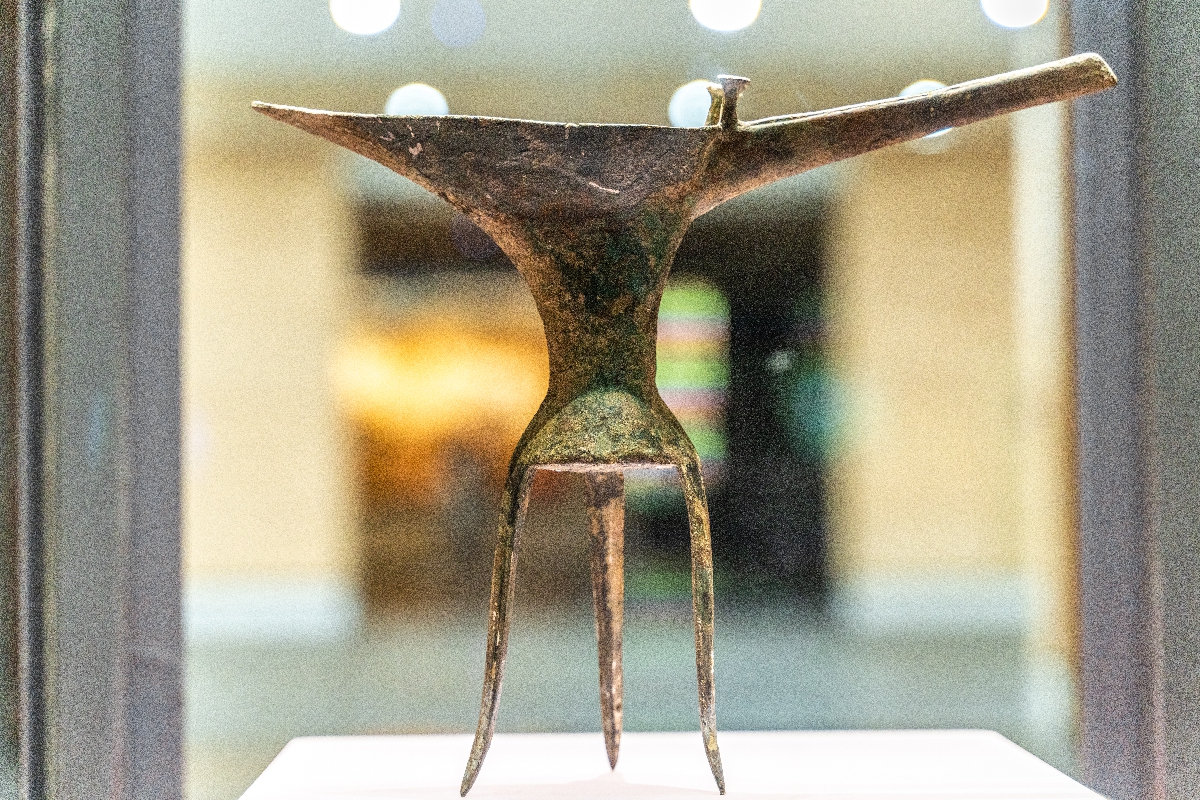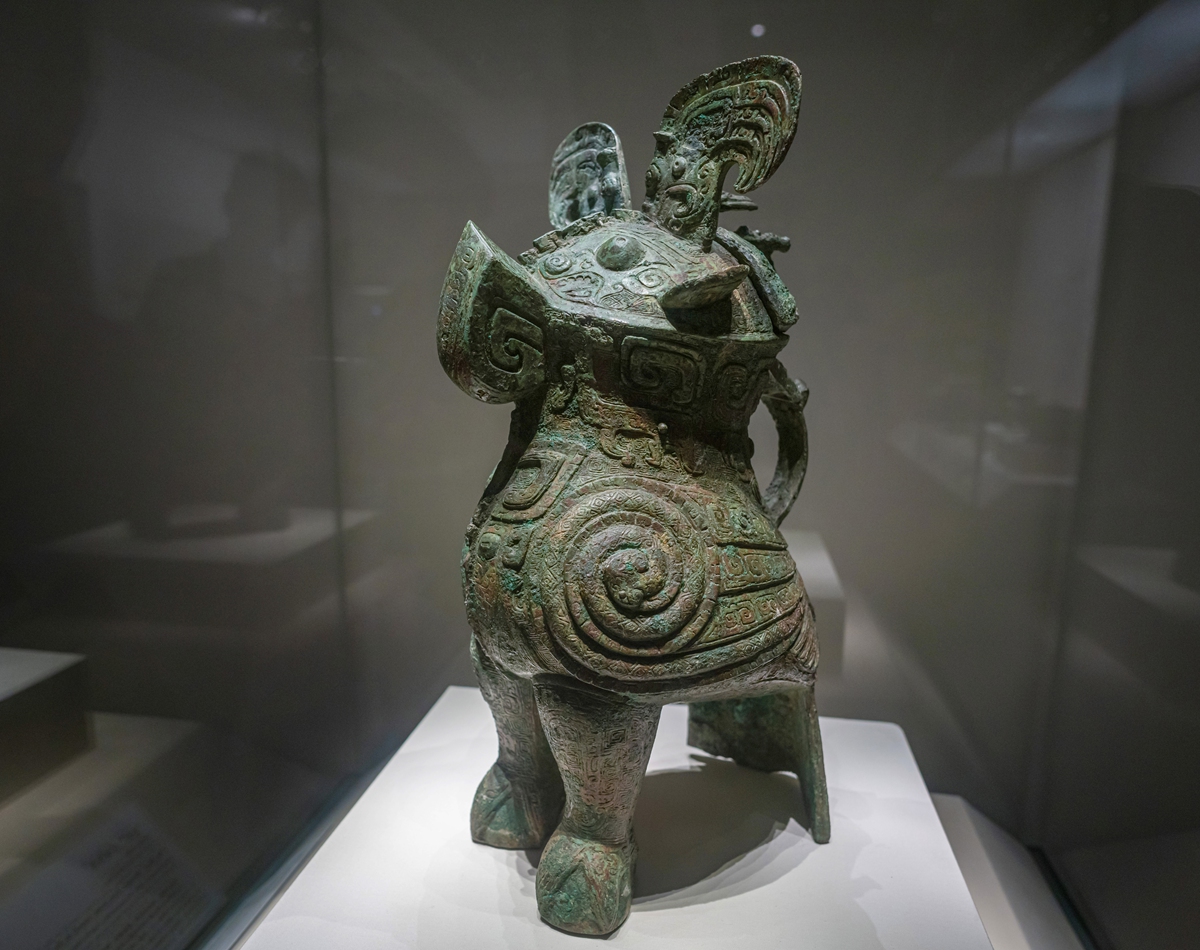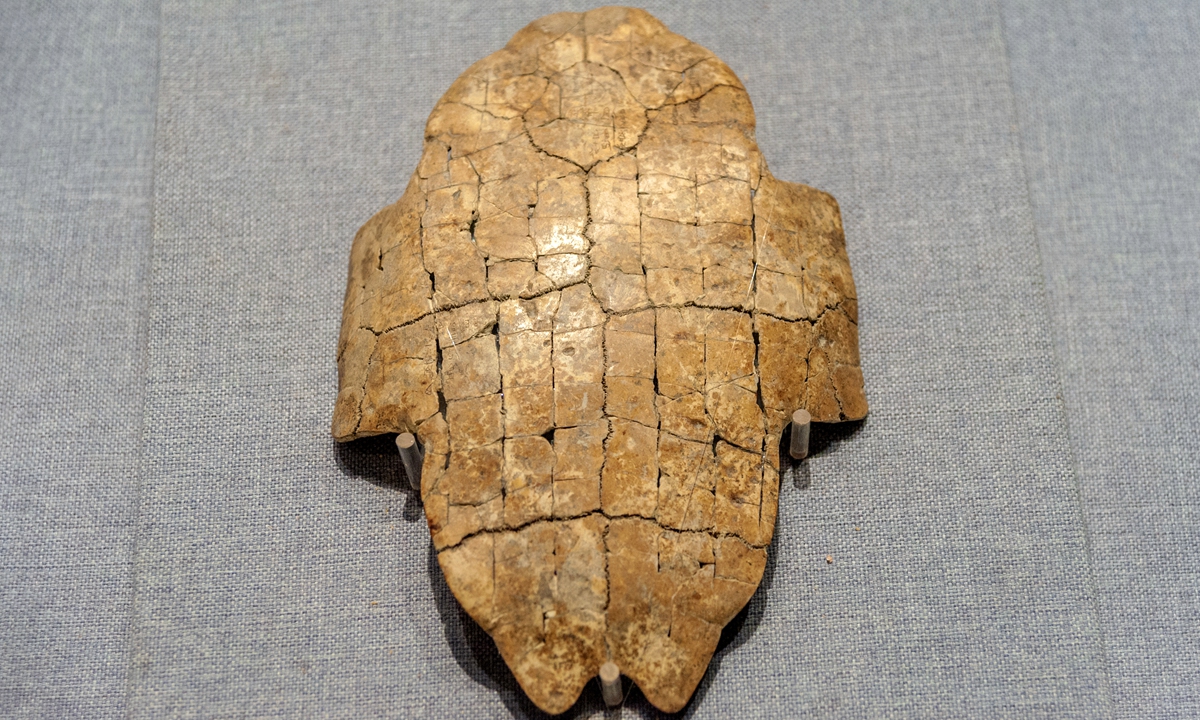
The Erlitou Site Museum of the Xia Dynasty Capital Photo: VCG
A new archaeological research center dedicated to China's Xia (c.2070BC-c.1600BC) and Shang (c.1600BC-1046BC) dynasties will be set up in Luoyang, Central China's Henan Province, according to the local government.
The center will be located close to the Erlitou Archaeological Site Park. The site was once the location of China's earliest capital city and is an important part of China's Project to Trace the Origins of Chinese Civilization (PTOCC).
It will be the only one of the many Xia-Shang historical spots scattered around Henan Province to have its own research base.
"Such centers play a dynamic role in piecing together the various puzzle pieces of Xia and Shang culture and turning them into a landscape picture of the province's ancient civilizations," Wang Wei, the PTOCC's chief expert, told the Global Times.

A Xia Dynasty jue, a bronze wine vessel Photo: VCG
'Never-ending importance'
The new Xia and Shang Civilization Archaeological Research Center is expected to cover 23,300 square meters and has multiple facilities such as a scientific research center, technology and archaeology center, archaeology specimen room and also a training base for Xia and Shang culture talents.
Construction of the center is expected to take 23 months.
The upcoming new center is not the only cultural facility connected to Erlitou culture. The Erlitou Site Museum of the Xia Capital and the Erlitou Archaeological Site Park are located to the east and the north of the site where the new base will be built.
Archaeologist Xue Feng told the Global Times that these institutions fulfill various functions and show the Xia and Shang dynasties' "never-ending importance" to Chinese archaeology.
Xue noted that the Erlitou Culture is the most iconic part of Xia culture. Originating some 3,800 years ago, the culture is a solid example that shows how "different civilizations [in China] integrated with each other to form a uniform civilization."
"The Xia-Shang periods in Chinese history show us how a country was formed and how primitive society gradually progressed into civilization with emerging etiquette systems and social classes," Xue noted.
Prior to the PTOCC, China had launched the Xia-Shang-Zhou Chronology Project in 1996.
The earlier project paved the way for the current PTOCC by determining the exact dates of the Xia, Shang and Zhou (1046BC-256BC) dynasties in China. Focusing on a wide range of subjects like astronomy, history and archaeology, the 1996 project was also China's largest multidisciplinary academic investigation.
Wang told the Global Times that Xia-Shang culture is an important research subject for the PTOCC as it provides insight into the early development of Chinese civilization.

A Shang Dynasty zun, a bronze wine vessel used during ritual ceremonies Photo: VCG
New strategy
Wang told the Global Times that the new Luoyang center will be significant for improving research at the provincial level.
"The Erlitou Culture and the Yinxu, or the Yin Ruins, have attracted the attention of national-level institutions, but provincial and city-levels centers such as the one we are building will be able to bring in local talent," Wang noted.
Since Henan is a province with numerous Xia-Shang archaeological sites, a research institute dedicated to Xia culture was established in Zhengzhou, the province's capital city, in 2020.
The center focuses on more than 10 Xia sites across the province. Li Boqian, the chief expert working on the Xia-Shang-Zhou Chronology Project, said that the institute's goal is to prove that the existence of the Xia Dynasty, once thought to only be a myth, is a "reliable historical fact."
"For those of us who want to make the 5,000 years of Chinese history more clear, the Xia period is a pivotal subject," Li noted.
Around 200 kilometers from Zhengzhou is the city of Anyang, the home of the Yin Ruins, a former capital of the Shang Dynasty and the site where a huge number of oracle bone inscriptions were found.

A Shang Dynasty oracle bone with inscription Photo: VCG
Dedicated to the site's notable oracle bone culture, the Yin Ruins Museum is a 2-in-1 venue that exhibits Shang relics while carrying out research projects on the site's history, mainly oracle bones and bronze wares.
Wang told the Global Times that different local archaeological characteristics help make the interpretation of Xia and Shang culture "more unified and diverse."
Cultural sociologist Chu Xin told the Global Times that while Henan Province is known for being home to an ancient capital, these "historical assets can be turned into a modern brand."
For instance, Luoyang is currently planning on establishing a "museum cluster" program that connects five ancient city ruins such as the Eastern Zhou Dynasty (770BC-256BC) Wang City Ruins and the Yanshi Shang City Ruins.
An attempt to change the traditional museum-going experience, the new project will allow visitors to "touch" the early history of China.



